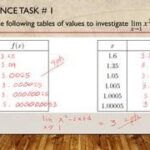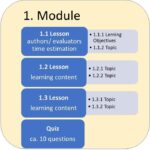Unlike the kind of partnership and dependency that many of us seek to complement our lives, the love and romance addict searches for someone outside of themselves to provide the emotional stability they lack within. Working to escape their own emptiness, they may find troubled or emotionally challenged partners to focus on, thereby giving away to others what they most want for themselves.
“I didn’t know marriage would be so hard.” — A client
To enter into a long-term, intimate relationship at first seems alive, safe and grounded. However, as each person grows and deepens, communications between couples start to be more challenging, filled with conflict. What happens? As a child, you witness and absorb your parents’ relationship, experienced the way the family expressed feelings and beliefs, which informed your beliefs about intimacy. A client told me that her husband believed they didn’t have to work on their marriage. That they could just glide through, let conflict pass. You don’t have to discuss, change or grow. It just is what it is. However, to do nothing, to not make choices, to not communicate, leads to numb, dead and empty relationships. Look around you. Read the statistics. One out of three couples are divorced.
Romantic love, true love and happy endings come as the last part of the journey of a long-term relationship. Or, it comes after many trials and tribulations of learning the wisdom of life. We come into relationships with different DNA, genes, family of origin patterns, wounds, beliefs, values and attitudes than our partners. At first we say, this person will make my life whole, fill up the voids. It takes two years until all of the shadow parts: the deeper feelings/beliefs of core wounds, the unresolved memories of childhood, surface. These behaviors and emotions start to show up in the relationship through unconscious patterns and defenses that stop love from growing. Your husband becomes your father. Your wife becomes your mother. Emotionally, you act out the childhood wounds that never got met. We are blinded, in denial of who we marry or commit to. We see fantasies, delusions and stories of true love that fail us in adulthood.
I believe we are brought into our relationships through destiny. We are attracted to another at first for various physical characteristics and values. Mostly, we are unaware of what hides beneath the surface. Your conscious mind plays out the “idea” of love and relationship, but it is your subconscious learned beliefs that eventually begin to control the relationship dynamic. You are shocked when you realize that your mate is an addict, or cold, or distant, or unforgiving, or withholding, or needy, or overbearing, or, or, or… The signs, the doubts and the fears you push away about the other, all that feels uneasy, unmentionable and uncomfortable, you ignore. You believe that all of what worries you about your significant other will change, disappear or vanish once you are bound in marriage. Yes, at first, you do see the heart and soul of the person. The goodness of who this person really is.
But, you are here to work through the human dilemma each person holds. You are the mirror of whatever strengths and weaknesses your partner brings to the relationship. Intimate relationship is a journey. It is a spiritual path to awaken all that is hidden and uncomfortable. It forces us to break out of the box, open our hearts deeply, heal and grow. The triggers that your partner will set off in you takes knowledge of intimate communication in order for the relationship to thrive; the language of expressing feelings, needs and wants.
To understand what it takes to grow, change and keep sparks alive in a marriage or committed relationship starts at understanding core wounds.
Core Wounds – The Center
A core wound begins in childhood. It is whatever hurt, neglected, abandoned, or abusive behavior that has caused any type of damage to the self-esteem. We all carry core wounds. Once a core wound is triggered, the original place, memory, event, or series of events is ignited. A mate can have a certain tone of voice, or body language, or values about money, and time spent together lessens — sexuality and affection wane. All at once you feel you are trapped, feel emotionally repressed or numb. It is a domino effect, everything inside of you that has been wounded and untended rises, and what was in denial comes to light. This other no longer appears to be the answer to your dreams. That is when the true work of true love begins in a long-term relationship. When each person has to face the realities of the others woundedness, needs and feelings. Judgment, blame and resentments build. This is the time to find the deeper, more important aspect of commitment; to discover the healing of core wounds and family of origin patterns. To become allies on a healing/spiritual journey of true love.
Core Wound: There are layers of trauma, memories and experiences that form a core wound. There are feelings, thoughts, behaviors and patterns that defend and protect the core wound because it is too painful and too big for the child to feel. The child, when first wounded, cannot hold the amount of emotional pain, so the child finds coping skills, behaviors and defenses to numb out these wounded emotions. Usually the child will act out what they learned from the family patterning; some families withhold, others rage, others manipulate, others blame, others care-take, others are superior and control, the patterns are endless. Unless the original feeling, belief, experience and memory is released, the core wound forms into unconscious, defended and destructive beliefs, actions and feelings.
Core wounds are deep, cellular emotional scars and experiences that have shaped beliefs and feelings that develop into patterning. It is layered to get to a core wound (memory/experience), to emotionally, energetically, psychologically and physically release it. To change negative thoughts and feelings about oneself, a person has to be willing to go back and retrieve the original self, the authentic self from before the trauma happened. It takes vigilance and determination to uncover core wounds. It is not a comfortable process. That is because it took many years, energy and protection to survive the core wound.
Wounded Core Beliefs: I am not lovable. I am unworthwhile, I don’t deserve. I am bad, I am wrong, everyone hates me, I’ll never get what I want, I’m stupid. I have to be good to be loved. Those are core beliefs. These beliefs are sometimes conscious, sometimes not. Tara Brach, PHD calls it “the trance of unworthiness.” At times you can be aware of a core wound and where it started, and still not be able to change it. Awareness doesn’t necessarily change beliefs. This is where the risk comes in. Releasing the core wound, you have dig into the fascia muscle, the cellular energy of your family pattern and learn to feel, express and receive. You have to tell the truth. This takes courage and the willingness to receive and take responsibility for the consequences of your expression. Core wounds are specific to each individual, to personal history — about money, relationships, creative potential, intelligence and body image — based on the specific beliefs families teach their children, directly or indirectly by what they say, how they treat you, how they mirror back to you: validate or invalidate you.
Wounded Unexpressed Emotions: The feelings that go along with core wounds; self-hatred, grief, rage, hurt, fear, terror. These are the feelings that are mostly kept numb, so the person doesn’t feel the negative belief or feel the memory or experience that traumatized them. The child cannot hold these feelings or express them; they freeze, take flight or attack and go numb in order to survive. Covering up the wound begins…
Wounded Behaviors: Then there are the behaviors; control, power, manipulation, isolation, reaction, defense, paranoia, blame, lack of follow through, hyper-vigilance, obsessive-compulsive behaviors, collapse, attack, talks fast, doesn’t talk, habits, idiosyncrasies, denial, delusion, lying. Behaviors that reject or cling, exaggeration to either end. An Either/Or type of thinking and behavior. Lack of vulnerability, forgiveness and acceptance. Judgment controls each thought and feeling.
Wounded Family Patterns: Then there are patterns; victim/victimizer, special/worthless, withholder, addict, martyr, people pleaser, savior, abuser, seducer. These are mostly unconscious behaviors and need to be made conscious. These patterns are known as co-dependent. Most do not see these behaviors in themselves. They see it in others but are blinded to their own participation and action of them. These are deep patterns of defense. They are energetic, long-term and generational. They need to be changed, layer by layer, one step at a time, with each situation, relationship and event that occurs.
Memories, for instance: your memory of the beating, verbal criticism, emotional judgments, all the abusive rejection, the particulars of how you feel hurt and were abandoned are unique to you. These memories have feelings and beliefs that shape your self-esteem and image. Each one builds the core wound. Solidifies it every time, triggers it when something similar reminds you of that experience or memory, then you react. There is a saying, “When bitten by a snake, you are afraid of a rope.” That is how a core wounded memory works. You might not even know why you are afraid of a rope until you unfreeze the original memory of being bitten by the snake. Of course there are layers to this for each person. It is not just one event, and at the same time one awakened, feeling body memory can open up many; a domino effect. That is why it is important to take it one step at a time. The pain of the original abuse or wound can be overwhelming. The knowledge, the feeling, the actuality that one has been abused, can be known in the mind, but once it hits the body it can be very explosive and shocking. Compassion, patience and opening up to oneself takes a lot of energy. At the same time, repressing all of these wounds takes a lot of energy, which can cause exhaustion, physical symptoms, depression, anxiety, addiction etc.
For the most part, these complex behaviors and feelings are created to protect, defend and keep the wounded child safe. It is how she/he learned to cope, survive and stay numb to the trauma. Most of it is unconscious. The person doesn’t even know they are feeling or acting in any way that is destructive. They might know they are unhappy and not getting what they want, and know they have been abused, but they can’t identify, locate or feel any of the above. The process is to bring into the conscious what is unconscious. It takes courage and risk.
In intimate relationship, you are bringing all of this to the table. Unless you are willing to go on this healing journey together, with your partner as an ally and guru that helps you see yourself through all the veils of defense in a subtle way, the relationship will stay frozen and go dead. Intimacy is a constant awakening. It is for those who have the courage to be uncomfortable, vulnerable and find the strength to open their hearts to everything that is painful, and joyful.
In order to truly love deeply you need to feel your broken heart. This heart softens, awakens and allows the most fiery, intense and passionate emotions to exist within the relationship. Intimacy is messy, exciting and scary. It is the most thrilling ride in life.






![Erratum for “An inverse theorem for the Gowers U^s+1[N]-norm”](https://azmath.info/wp-content/uploads/2024/07/2211-erratum-for-an-inverse-theorem-for-the-gowers-us1n-norm-150x150.jpg)

